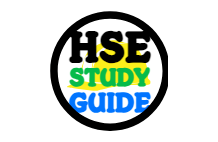
Top 25 Scaffold Safety HSE Interview Questions and Answers
Here are the top 25 scaffold safety HSE (Health, Safety, and Environment) interview questions along with sample answers to help you prepare:
1. What is scaffolding, and why is it important in construction?
Answer:
Scaffolding is a temporary structure used to support workers and materials during construction, maintenance, or repair work. It provides a safe and stable platform for working at heights, ensuring worker safety and efficiency.
2. What are the main types of scaffolding?
Answer:
The main types of scaffolding include:
- Supported Scaffolding: Frame, tube, and coupler scaffolding.
- Suspended Scaffolding: Hung from roofs using ropes or chains.
- Mobile Scaffolding: Mounted on wheels for easy movement.
- Cantilever Scaffolding: Supported by needles or beams.
3. What are the key components of scaffolding?
Answer:
Key components include:
- Standards (vertical tubes)
- Ledgers (horizontal tubes)
- Transoms (crosswise tubes)
- Base plates and sole boards
- Platforms (working decks)
- Guardrails and toe boards
- Braces and couplers
4. What is the maximum height-to-base ratio for scaffolding?
Answer:
The maximum height-to-base ratio is typically 4:1 for freestanding scaffolding. This ensures stability and prevents tipping.
5. What is a scaffold tag, and why is it important?
Answer:
A scaffold tag is a visual indicator placed on scaffolding to communicate its safety status:
- Green Tag: Safe for use.
- Yellow Tag: Caution, use with specific safety measures.
- Red Tag: Unsafe, do not use.
It ensures workers are aware of the scaffold’s condition before use.
6. What are the common hazards associated with scaffolding?
Answer:
Common hazards include:
- Falls from heights
- Scaffold collapse
- Falling objects
- Electrical hazards
- Overloading
- Poor assembly or maintenance
7. How often should scaffolding be inspected?
Answer:
Scaffolding should be inspected:
- Before initial use.
- After any modifications or adverse weather conditions.
- Regularly (e.g., weekly or as per company policy).
8. What personal protective equipment (PPE) is required for scaffolding work?
Answer:
Required PPE includes:
- Hard hats
- Safety harnesses with lanyards
- Non-slip footwear
- High-visibility clothing
- Gloves and eye protection
9. What is the purpose of a toe board on scaffolding?
Answer:
A toe board prevents tools, materials, or debris from falling off the platform, protecting workers below.
10. What is the safe working load (SWL) of scaffolding?
Answer:
The safe working load is the maximum load a scaffold can safely support. It depends on the scaffold type and design but is typically 25 kg/m² for light-duty scaffolding.
11. What is the minimum width required for a scaffold platform?
Answer:
The minimum width is 600 mm (24 inches) for most scaffolding platforms.
12. What is the maximum gap allowed between scaffold planks?
Answer:
The maximum gap between planks should not exceed 25 mm (1 inch) to prevent tripping hazards.
13. What is the purpose of guardrails on scaffolding?
Answer:
Guardrails prevent workers from falling off the scaffold platform. They should be installed at a height of 38-45 inches above the platform.
14. What is the role of a competent person in scaffolding safety?
Answer:
A competent person is trained and authorized to inspect, assemble, and supervise scaffolding work. They ensure compliance with safety standards and regulations.
15. What are the OSHA standards for scaffolding?
Answer:
OSHA standards (29 CFR 1926.451) outline requirements for scaffold design, construction, load capacity, inspection, and worker training.
16. How do you ensure scaffolding stability?
Answer:
Ensure stability by:
- Using a firm and level base.
- Installing base plates and sole boards.
- Adding braces and ties.
- Avoiding overloading.
- Following the height-to-base ratio.
17. What is the minimum height requirement for guardrails on scaffolding?
Answer:
The minimum height for guardrails is 38 inches (965 mm) above the platform.
18. What is the purpose of a scaffold tie-in?
Answer:
A scaffold tie-in secures the scaffold to the building or structure, preventing movement or collapse.
19. What precautions should be taken when working near power lines?
Answer:
Precautions include:
- Maintaining a safe distance (e.g., 10 feet for overhead lines).
- Using non-conductive materials.
- De-energizing power lines if possible.
- Installing barriers or warning signs.
20. What is the difference between a supported scaffold and a suspended scaffold?
Answer:
- Supported Scaffold: Rests on the ground or a solid structure.
- Suspended Scaffold: Hangs from an overhead structure using ropes or chains.
21. What is the importance of a scaffold inspection checklist?
Answer:
A checklist ensures all critical components (e.g., base, guardrails, ties) are inspected systematically, reducing the risk of oversight and ensuring compliance with safety standards.
22. What is the maximum allowable deflection for scaffold planks?
Answer:
The maximum allowable deflection is 1/60th of the span between supports.
23. How do you prevent falls from scaffolding?
Answer:
Prevent falls by:
- Using guardrails and toe boards.
- Wearing safety harnesses with lanyards.
- Ensuring proper platform construction.
- Avoiding overreaching or climbing on guardrails.
24. What is the role of a scaffold erector?
Answer:
A scaffold erector is responsible for assembling, dismantling, and modifying scaffolding according to design specifications and safety standards.
25. What steps should be taken if a scaffold is found to be unsafe?
Answer:
- Immediately stop work.
- Tag the scaffold as “unsafe” (red tag).
- Notify the supervisor or competent person.
- Repair or dismantle the scaffold as needed.
- Conduct a re-inspection before reuse.
These questions and answers cover a wide range of scaffold safety topics and can help you prepare for an HSE interview. Always tailor your responses to reflect your experience and local regulations.
Top 25 Safety Manager Interview Questions with Sample Answers | Free Download
Top 25 Safety Supervisor Interview Questions with Sample Answers | Free Download
Top 25 Safety Engineer Interview Questions with Sample Answers | Free Download
Top 25 Safety Officer Interview Questions with Sample Answers | Free Download

























Am interested to know if you’re hiring a job